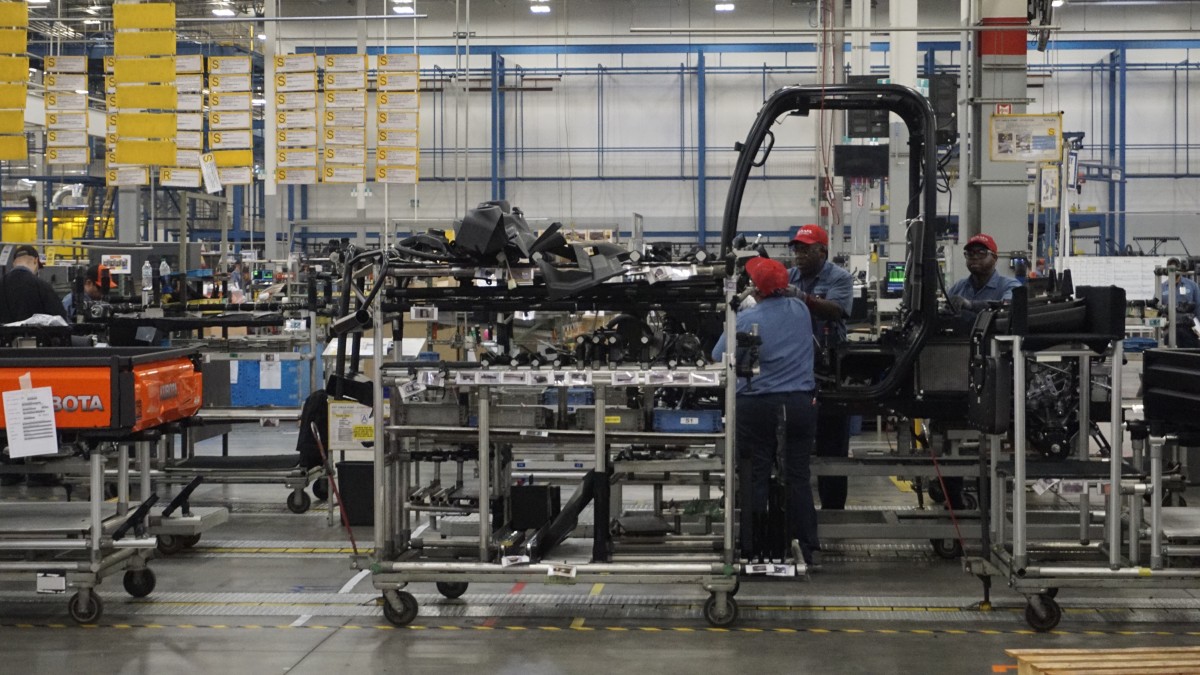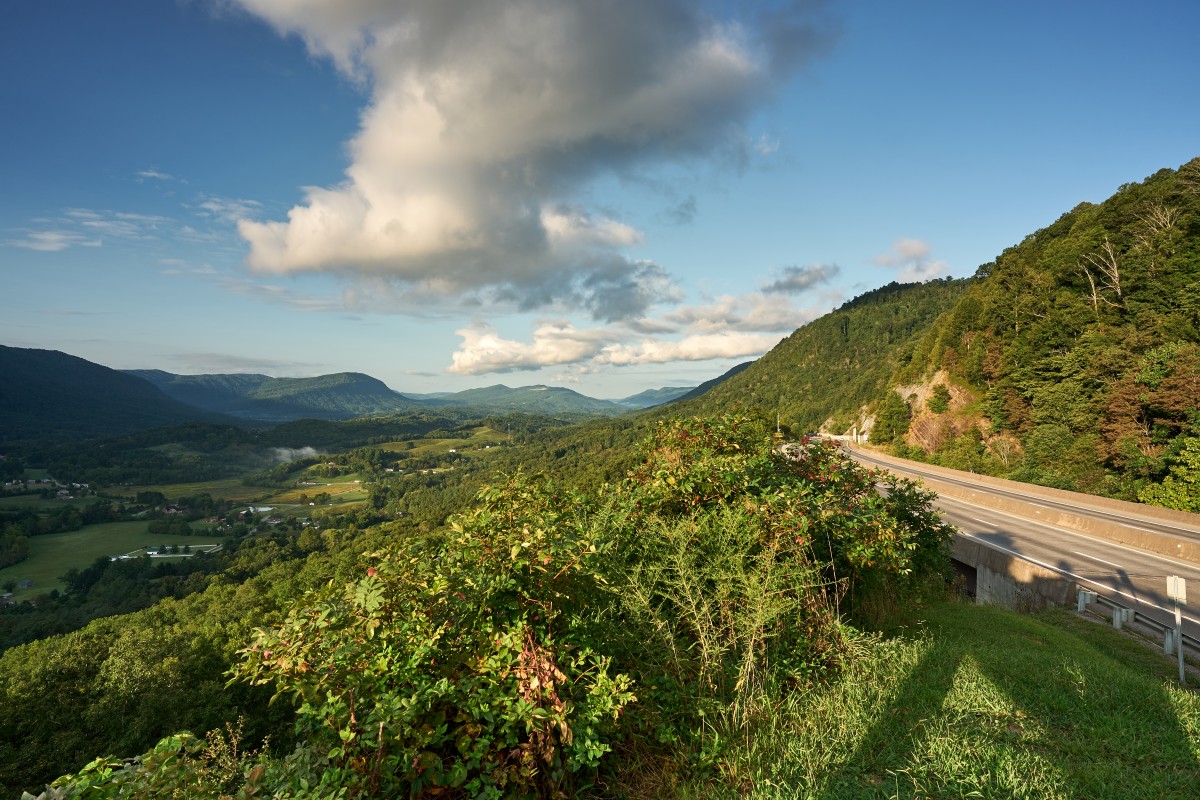In fall 2014, Michael and Betty Gill, in their 50s, were ready for a new adventure in their lives, so they got in their RV and headed for the place they’d spend the better part of the next four years.
Dollywood.
The amusement park in Pigeon Forge, Tennessee, has been open in various forms since 1961, but its 1986 relaunch as Dollywood marked a new era of growth for the longtime tourist destination. The park is themed around country music superstar and cultural icon Dolly Parton, and operated by Herschend Family Entertainment, a company founded in Branson, Missouri, that runs theme parks and attractions throughout the country.
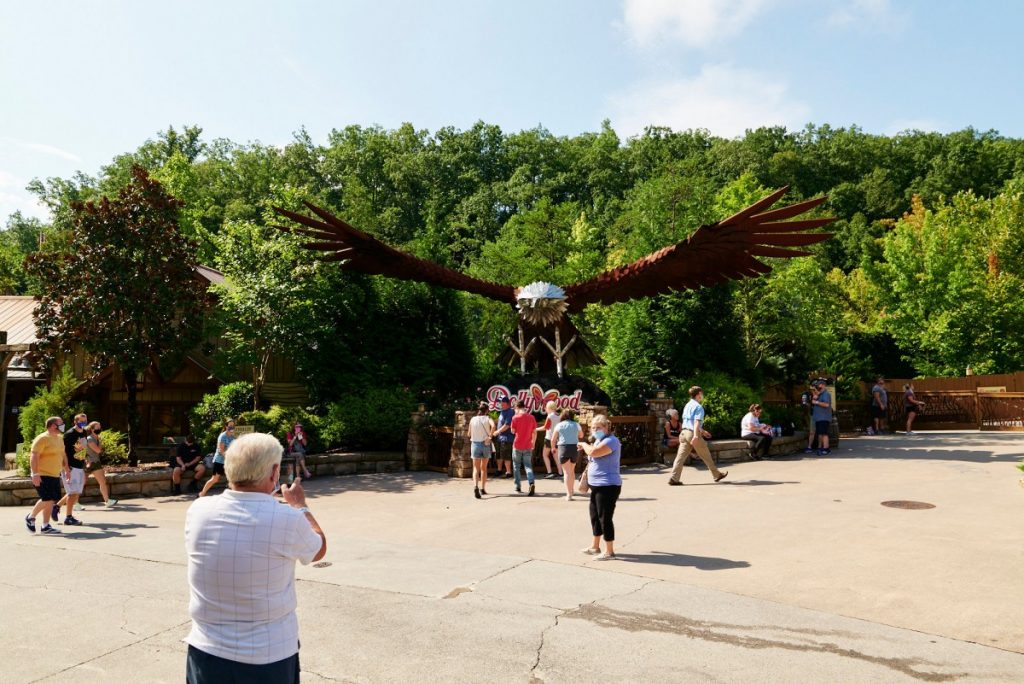
Besides Dollywood, Herschend operates Dollywood’s Splash Country water park, Dolly Parton’s Stampede, Dollywood’s DreamMore Resort and Dollywood Cabins, all in the Pigeon Forge region. In a normal year, 4,000 people work at those attractions, making Herschend the biggest employer in Sevier County, Tennessee.
Dollywood and its sister attractions function as the anchor in the county’s tourism industry, which provides more than half of the employment in the county, said Allen Newton, executive director of the Sevier County Economic Development Council. The county is also home to about 30 manufacturers, which employ another 4,000 people. Covenant Healthcare invested $120 million in LaConte Medical Center, the community hospital. Retail is also another big employer, with tourists driving business at chain stores, including a Walmart and a Red Lobster that routinely rank near the top of their respective chains for volume of sales.
The McKinsey Global Institute’s report, “The future of work in America,” categorizes Sevier County as “Americana,” meaning it’s a rural county that’s “somewhat better-performing” than the more stricken “distressed Americana” category. Among Appalachian counties, McKinsey is fairly bullish on Sevier County’s economic future, with its midpoint scenario predicting 10-15 percent net job growth through 2030, a step above even Sevier’s neighbors in the Knoxville metro area.
The McKinsey report, which came out in 2019 long before anyone had heard of COVID-19, suggests tourism as a likely option for rural counties struggling with stagnant economic growth: “Every rural community (and trailing city, for that matter) will have to take a realistic inventory of its assets, such as available industrial space, potential tourist attractions, educational institutions, and specialized workforce skills. That data can form the basis of a clear-eyed plan, built around a growth engine industry that can create jobs and spillover effects.”
Sevier County is already ahead in that manner, with a fully developed tourism economy based around Gatlinburg, Pigeon Forge and, to a lesser extent, Sevierville. Unlike many other counties in Appalachia, Sevier County is growing, with its population increasing nearly 10 percent between 2010 and 2019, to more than 98,000, according to the U.S. Census. Of that, 95 percent identify as white, 13.9 percent live below the poverty line, and 17.5 percent of those under 65 don’t have health insurance. Tennessee is one of 13 states that has not adopted Medicaid expansion.
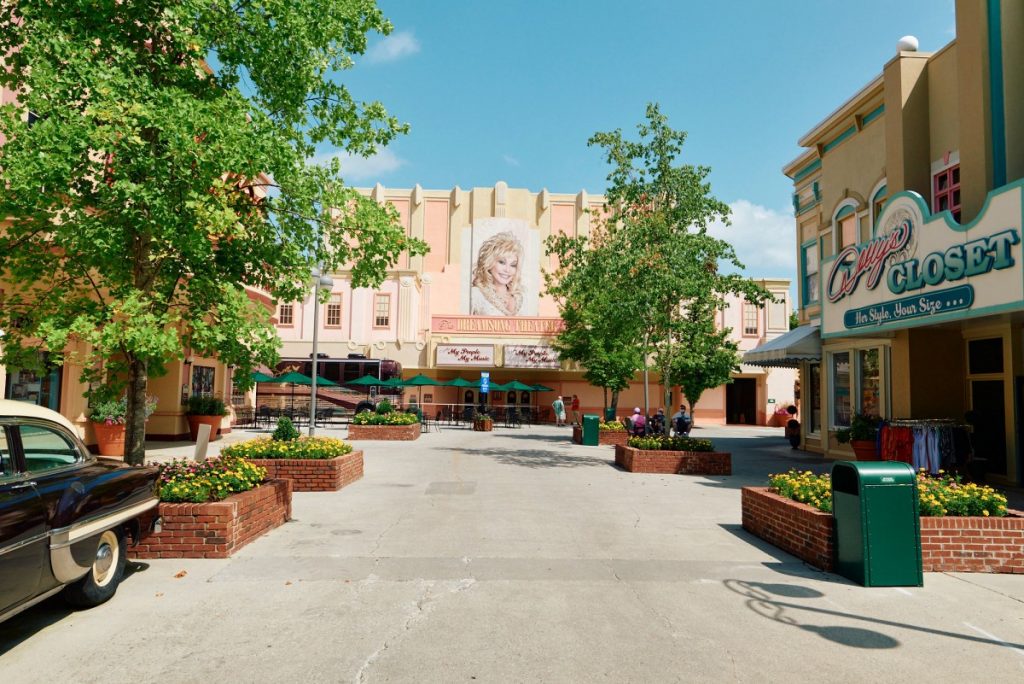
Sevier County’s biggest economic challenge has been providing employers there a sufficient workforce, according to economic development officials.
“About 50 percent of our workforce is from outside of Sevier County,” Newton said. “That number will probably go up.”
And that’s where Michael and Betty Gill come in.
The Louisiana couple had spent more than 40 years in insurance and banking, but then they heard about workamping — in which people live out of their RVs working full- or part-time jobs. The Gills had used their RV primarily for tailgating at Louisiana State University football games, but in 2015, they hit the road as full-time workampers. Dollywood was their first destination.
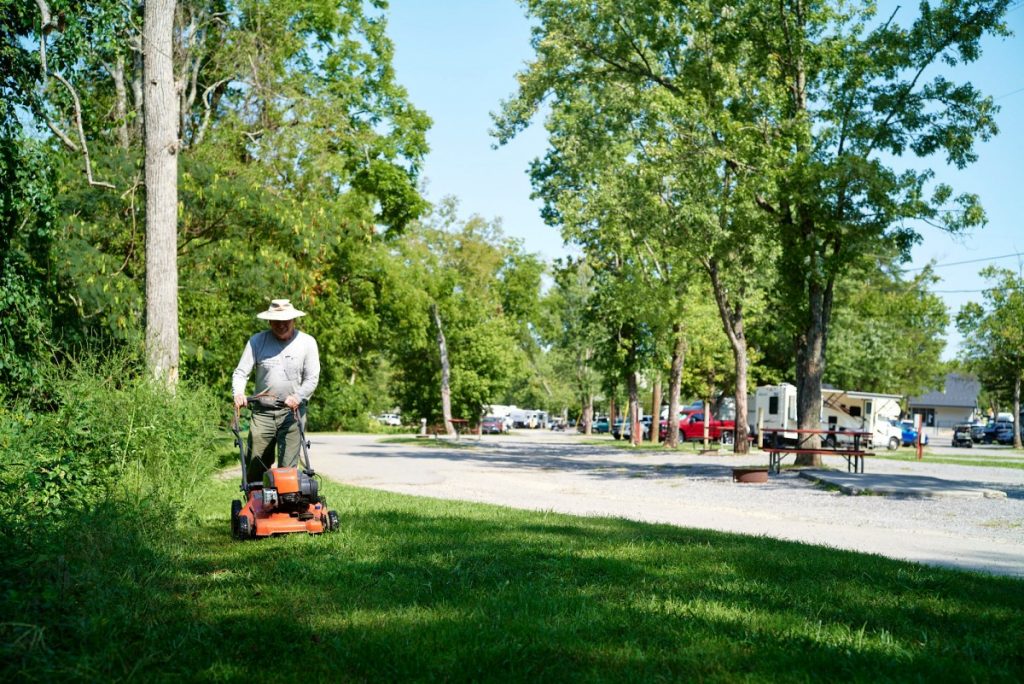
“If you stay at Dollywood, all the shows are free for you and your guest,” Michael Gill said. “That’s why we were up there for four years. There’s so much to do up there that don’t even cost any money.”
Michael and Betty each worked between 20 and 30 hours per week, with him cooking at outdoor festivals and eventually a restaurant and her running the cash register at various jobs alongside him. They topped out at $11.50 an hour.
For the Gills, workamping wasn’t about working. They’d already spent most of their lives doing that. “What we’re doing now is playing,” Michael said. “We’re doing something completely different from our jobs and enjoying it, for much less pay.”
While at Dollywood, they ate free meals in the park and stuck to free entertainment as much as possible. Admission to the nearby Great Smoky Mountains National Park is free as well.
However, many workampers are carrying on the lifestyle while trying to make ends meet, Michael said. He anticipates the category of workers will continue to swell in coming years.
“Twenty-two thousand baby boomers are retiring each day,” he said. “Those people, like myself, aren’t going to sit still. We’re not going to go home and take a nap. This is a trained workforce that came from good jobs. They want to slow down but don’t want to quit, especially those who did not put aside a pension.”
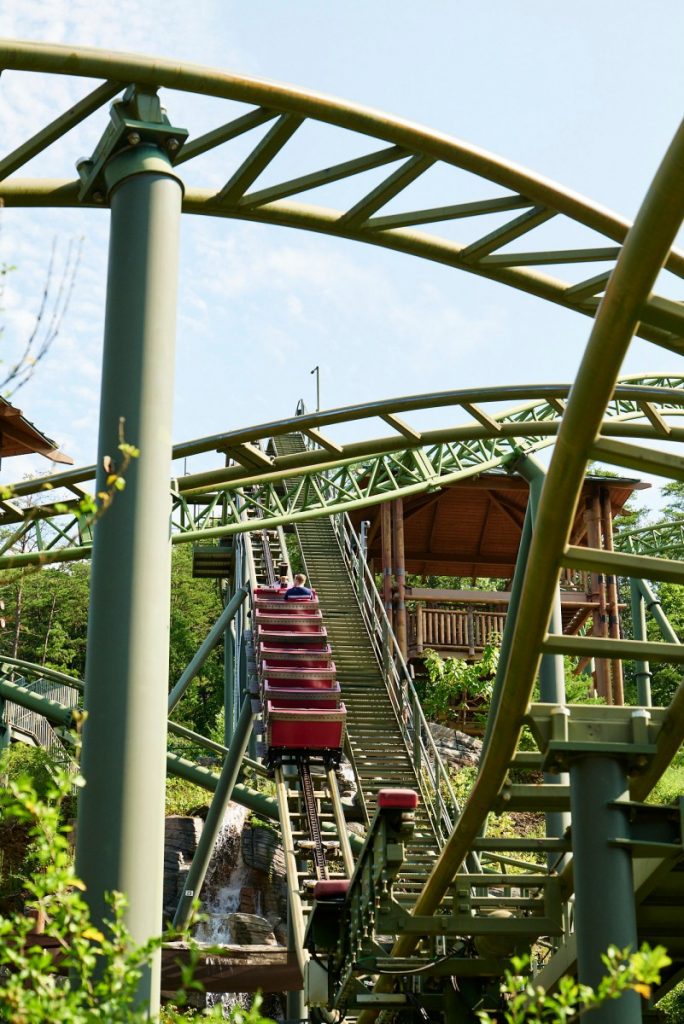
In lieu of health insurance, the Gills participate in Christian Healthcare Ministries, which touts itself as “the first and longest-serving health cost sharing ministry.” Instead of premiums, members pay a monthly financial “gift” to the ministry and essentially pay each other’s medical bills. Medical costs that are eligible under the organization’s guidelines are submitted and then shared or reimbursed.
The Gills decided to move on from Dollywood after 2018. “Dollywood pretty much required you to work 30 to 40 hours a week,” Gill said. “That’s not what we’re looking for.”
They’ve continued to travel annually to Pigeon Forge, but since 2019 have worked for Clabough’s Campground and as representatives for Workamper News, a publication and networking site based around the lifestyle.
Herschend Family Entertainment normally employs 4,000 total workers in Sevier County each year, with 250 to 400 workampers. Roughly two-thirds of the 4,000 Herschend workers are employed on a seasonal basis. One third are full-time year-round, a third are full-time seasonal, and a third are part-time seasonal, said Herschend spokesman Pete Owens. Workampers fall into the latter category, Owens said, because of the flexible scheduling.
“Most of them are retired, but it’s really all kinds of people,” Michael said. “In the summertime, Dollywood has plenty of workers because it hires high school students, college students and international workers. Spring and fall is when they need help, and that’s when workampers come in to help them.”
Herschend also employs a “pretty healthy number” of foreign workers on J-1 visas, Owens said. Many come from the Caribbean islands or eastern Europe. “They tend to be quite good workers, frankly,” Owens said.
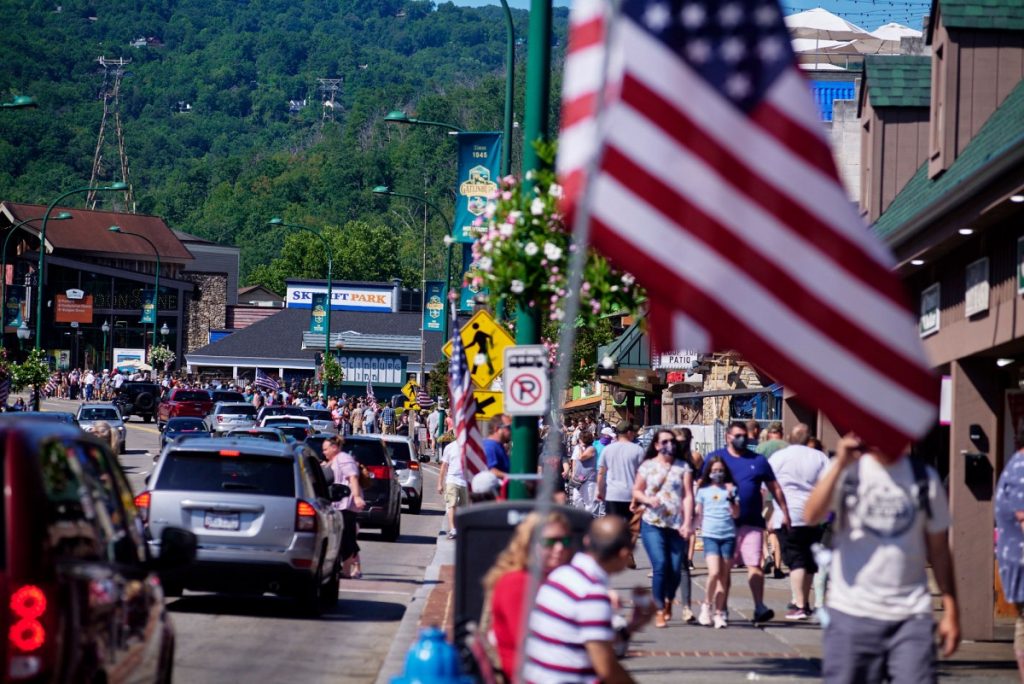
Sevier County’s tourism and hospitality industries have been great for spending in the county. Sales there exceeded $4 billion in 2018, and it ranked first in Tennessee for per capita spending on apparel and accessories, amusements and eating and drinking.
But county residents aren’t seeing that prosperity in their paychecks. Per capita income in 2018 was $22,483 — 29th (out of 95) in Tennessee, and a little more than half the national average of $53,820.
Through her Longreads essay “Living with Dolly Parton” and a July appearance on the Trillbilly Worker’s Party podcast, eastern Tennessee native and historian Jessica Wilkerson has criticized Dollywood and Herschend Family Entertainment for its labor practices.
“There’s this image of Dollywood, where you think they’re employing local people,” said Wilkerson, a professor at West Virginia University and author of “To Live Here, You Have to Fight: How Women Led Appalachian Movements for Social Justice.”
“You don’t think of it as part of the global economy, but it is. You have Russian and eastern European immigrants in the front of the house, and in the back of the house you often have Latinos or Caribbean workers. Those industries can’t sustain themselves without global workers, and that to me is fascinating.”
Wilkerson also contextualizes the tourism economy within large-scale economic changes. Like the rest of Appalachia and the country, eastern Tennessee experienced deindustrialization in the ’70s, ’80s and ’90s as electronics and furniture factories closed and moved overseas for cheaper labor in a global economy.
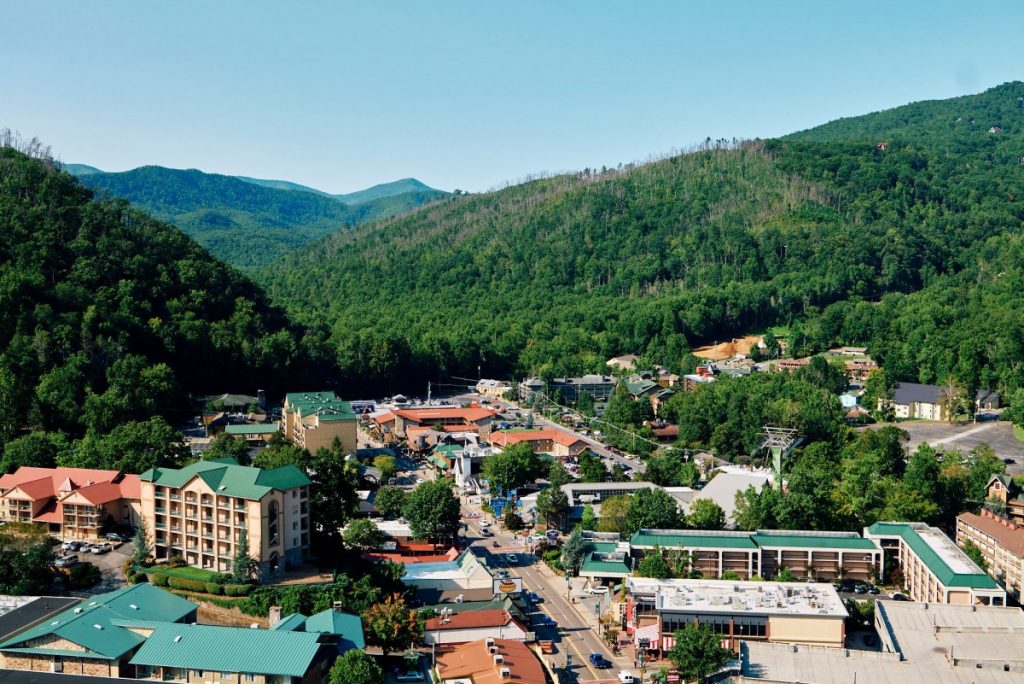
Sevier County filled the economic gap by taking advantage of its location next to the Great Smoky Mountains National Park, the most visited national park in the country, to grow its tourism industry. The city of Gatlinburg exploded after the park opened in 1934. Pigeon Forge followed, especially after it developed a plan in 1982 that focused on attracting and marketing theme parks, outlet malls and live music venues. The Herschend family’s 1976 acquisition of the park that became Silver Dollar City and its transformation into Dollywood a decade later became a driving force in Sevier County’s rapid growth.
The service jobs created by the tourism industry, however, don’t pay near the wages or offer the benefits of the old factory jobs. That fits a larger pattern of economic development in eastern Tennessee, labor professor Eve Weinbaum wrote in the 2004 book, “To Move a Mountain: Fighting the Global Economy in Appalachia.”
“In East Tennessee, the dominant model of economic development is not premised on creating new opportunities for the majority of citizens,” Weinbaum wrote. “Rather, public officials have come to understand business recruitment as a goal unto itself. An examination of recruitment materials reveals that officials believe business to be motivated primarily by two concerns, influenced by the market’s competitive pressures: reducing labor costs, and keeping the workforce busy and docile.”
Not only do Sevier County’s tourist attractions pay less than the factories did, but they use retirees, high school and college students, workampers and visa workers to drive down labor costs even further.
“Compare what people made in 1970 to what they’re making in the theme parks [today],” Wilkerson said. “We know it’s booming. It’s really good for Sevier County, the state of Tennessee, but no one wants to talk about what it means for actual workers.”
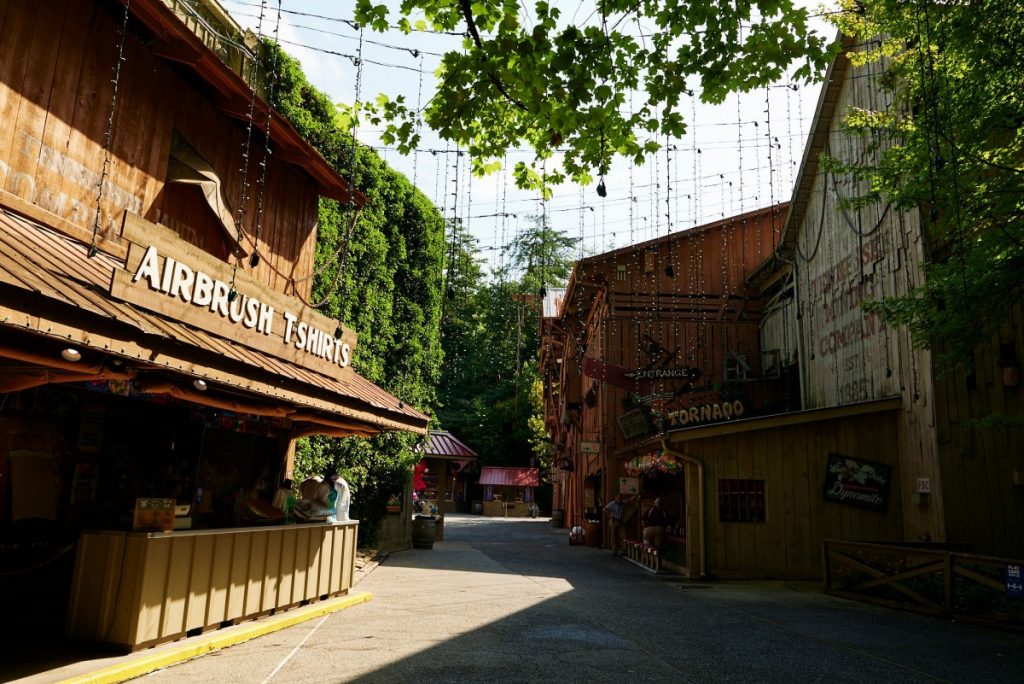
None of this is unique to Dollywood. It’s representative of industrial-scale tourism, even in Appalachia where authenticity is key. Dollywood does in fact play to Dolly Parton’s Appalachian roots, with demonstrations of traditions such as blacksmithing, leather working and candle making. Unlike a factory, Dollywood won’t move overseas.
“Tourism fundamentally is place-based,” Wilkerson said. “It’s not going anywhere. That’s a low bar, but for places that have been hit really hard with factories closing down or migrating, that’s still really important.”
The place-based nature of tourism makes it remarkably elastic, and therefore, it’s become a common denominator for communities across Appalachia looking to jumpstart their economies. The attractions are as varied as the region’s topography, with outdoor recreation, musical heritage, history and artisanship appearing as common themes.
The tourism industry seems to be shifting toward a more local focus, said Stefanie Benjamin, a professor in the Department of Retail, Hospitality & Tourism Management at the University of Tennessee, Knoxville.
“Tourists are really seeking out authentic, unique experiences,” Benjamin said. “Travelers are really looking for this local aspect. They’re looking for local food, where they know that it’s coming from farm to table. They’re looking for local craft beer, local distilleries, local wineries.”
Adventure tourism is also growing.
“Especially around the Appalachian area, this unique landscape and environment is well-suited for rafting and kayaking and zip-lining, also mixed in with heritage and cultural historic elements,” Benjamin said. “Millennials are driving the tourism industry right now, and Gen Z’s are coming up right after them. That’s where Appalachia can pick up, with these more unique and off-the-beaten-path places.”
Even in the economically depressed coal-producing parts of Appalachia, communities have started to build new economies around tourism, whether through off-road trail networks like West Virginia’s Hatfield-McCoy Trails or around rivers, lakes and other attractions. Tourism has proven to be one of the few economic solutions that’s stuck in these rural communities, even with less-than-living wages and seasonal limitations.
The coronavirus pandemic, however, has hammered the tourist industry and may have disrupted it for decades to come.
The economic effects of COVID-19 hit tourism, hospitality and destination retail worse than other parts of the economy. Sevier County wasn’t spared.
“We had the lowest unemployment rate in the state as of December 2019 – 2.1 percent,” said Allen Newton of the Sevier County Economic Development Council. “Then COVID hit in March, and everything shut down. Businesses closed. Massive layoffs, just like all over the country. Then we went to the highest unemployment rate in the state,” at 29.5 percent.
Dollywood had opened on Friday, March 13, to season pass holders before making the decision that night not to reopen to the general public the next day. The park furloughed its seasonal employees before going into “hibernation mode” the third week in April, said Herschend spokesman Owens. It did not reopen until mid-June.
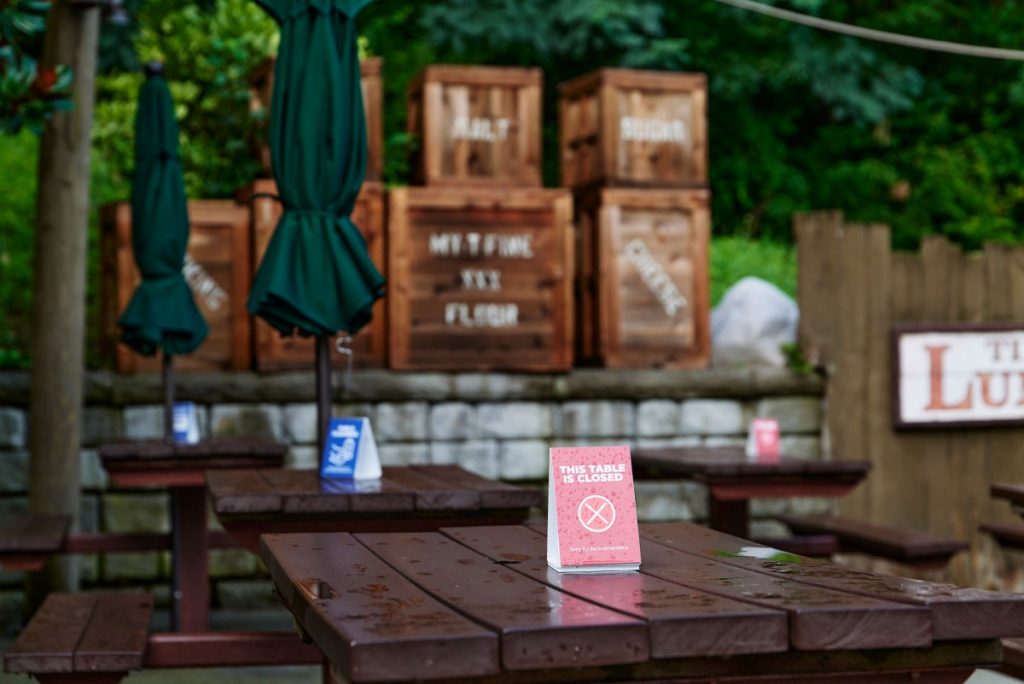
When Dollywood did reopen, it did so with 6,500 new signs placed across Herschend’s properties with safety rules and warnings, along with requiring masks and taking each employee and visitor’s temperature upon entrance. Owens said the park is running at about 40 percent of its 2019 attendance, which he said is better than the 20-30 percent attendance at many of its regional competitors.
“It’s a challenging market,” Owens said. “We’re doing what we can do.”
Sevier County has rebounded from adversity before – and recently. In late 2016, a series of wildfires that began in the Smokies spread into Gatlinburg and Pigeon Forge, killing 14 people and destroying buildings, including much of Gatlinburg’s Cobbly Nob neighborhood. Yet the county’s tourism industry rapidly rebounded.
Newton said he believed rebuilding from the pandemic will follow much the same pattern. And he argued that workers will benefit from that growth.
“We see our tourism share growing unbelievably,” Newton said. “I think our challenge is going to be workforce. Our issue has never been, ‘Are we going to have enough sales, enough people?’ Our issue has always been workforce. We’re working hard to try to solve some of those issues through housing, internships and job fairs. We’re doing everything we possibly can. Pay is going up, benefits are going up. There are lots of things going on in our market to benefit the employees.”
After the pandemic hit, Mike and Betty Gill stuck around Pigeon Forge until June before heading back to Louisiana. They had planned to spend the summer working RV shows, but everything got canceled. They’re hunkered down at Mike’s parents’ farm for now, but plan to return to Pigeon Forge for another month before heading south to Key West.
Most of their Workamper friends lost their jobs amid the spring shutdown. But as is workampers’ wont, they just moved on to other locations. “A good many just relocated,” Gill said.
This story is part two of a three-part series on the future of work in Appalachia. Read more from the project Disrupted here.


